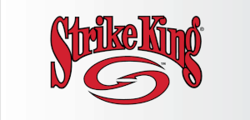Types of Safety Footwear
- Posted on
- By Gellco Outdoors
- Posted in Safety Footwear

For those who work outside of an office for a living, having the proper safety footwear is crucial. Safety footwear is specifically designed to do what its name implies: keep your feet safe. There are a variety of safety shoe and boot options in production for various types of work environments.
Our store stocks a wide range of safety footwear styles to meet the needs of working men and women. For those who prefer specific name brands, use our shop by brand page to narrow your search!
The following is a list of safety features, how they are abbreviated, and their purpose:
Impact Protection (I)
Steel Toe (ST)
Aluminum/Alloy Toe (AT)
Composite Toe (CT)
These boots are typically rated for protection against impacts of 30, 50, or 75 foot pounds.
Metatarsal Protection (Mt)
Boots with met guards also provide protection against 30, 50, or 75 foot pounds of falling objects. The difference is that these boots protect the metatarsals of the foot, not simply the toes.
Compression Protection (C)
Compression footwear protects not only against objects dropping onto the foot, but from heavier rolling objects as well. A boot which offers compression protection will provide protection against either 30, 50, or 75 foot pounds being dropped, and will also protect against rolling objects of either 1000, 1750, or 2500 pounds, respectively.
Electrical Hazard Protection (EH)
Electrical Hazard footwear provides protection against electrical shock. All electrical hazard qualified footwear must be able to insulate against 600 volts from an open circuit, which is over three times the amount of electricity that is generated from an average wall outlet.
Static Dissipation (SD or ESD)
Footwear classified as SD or ESD offer protection against static electricity. There are three degrees of protection offered, with resistance levels of 10, 35, or 100 megaohms.
Puncture Resistance (PR)
Puncture resistant footwear contains a metal plate which protects against penetration of sharp objects. This metal plate is located between the insole and outsole, and is not removable. To qualify as a PR boot, Soles must show no sign of cracks after 1.5 million flexes and must have a minimum puncture resistance of 270 pounds.
It is important that companies ensure their employees have the necessary safety footwear. For guidelines and regulations, see the following links to OSHA and ATSM requirements.
OSHA
https://www.osha.gov/laws-regs/regulations/standardnumber/1910/1910.136
https://www.osha.gov/laws-regs/regulations/standardnumber/1910/1910.132
ATSM











